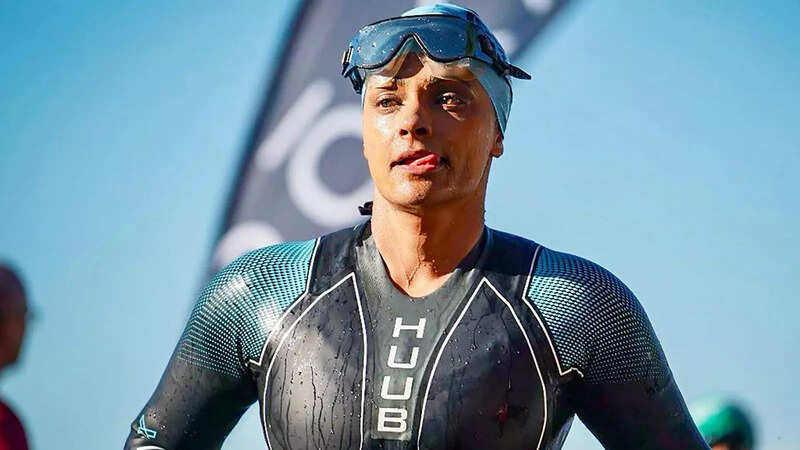Swim. Bike. Run. Brave Sexism. Meet the women acing Ironman

- Sharmila GanesanKetaki Desai
- TNNUpdated: Mar 7, 2025, 23:18 IST IST
The grueling triathlon is seeing more Indian women putting their endurance to the test, despite scepticism and safety issues
UFO. Unidentified Female Object. That’s what Anuradha Vaidyanathan felt like the first time she decided to run on the tracks of Bengaluru’s Sree Kanteerava stadium 16 years ago as she began training for the Ironman triathlon. But her quest to swim, bike and run in her home city became its own endurance sport. “Give up swimming. Get married,” said an accomplished swimming coach when Vaidyanathan requested to use the 50m pool — where ‘ladies’ were only allowed between 3 pm and 4pm. Later, on finishing a run before sunrise, she entered a women’s loo at a stadium only to find a bunch of half-dressed men using it as a changing room, staring her down as if she had landed from the moon. In her memoir ‘Anywhere But Home,’ she writes about all it took to become India’s first Ironman in 2006, paving the way for a bevy of Indian women who want the event to shed its masculine name.
Born in Hawaii in 1979, Ironman — a triathlon which began as a friendly wager between a US Navy officer and his wife — is now a global phenomenon with hundreds of races in over 55 countries. Typically comprising a 3.8-km swim, a 180-km bike ride and a 42.2- km marathon run, all of which should be completed within 17 hours, the competition is becoming the next frontier in fitness, especially for women. After American triathlete Lyn Lemaire, the only one to compete in the event in its second edition in 1979, opened the doors, an iconic moment for arrived in 1982 when a 23-year-old Julie Moss staggered and crawled across the finish line 30 seconds after she fell and lost all bodily function, watching a rival pass.
Born in Hawaii in 1979, Ironman — a triathlon which began as a friendly wager between a US Navy officer and his wife — is now a global phenomenon with hundreds of races in over 55 countries. Typically comprising a 3.8-km swim, a 180-km bike ride and a 42.2- km marathon run, all of which should be completed within 17 hours, the competition is becoming the next frontier in fitness, especially for women. After American triathlete Lyn Lemaire, the only one to compete in the event in its second edition in 1979, opened the doors, an iconic moment for arrived in 1982 when a 23-year-old Julie Moss staggered and crawled across the finish line 30 seconds after she fell and lost all bodily function, watching a rival pass.
